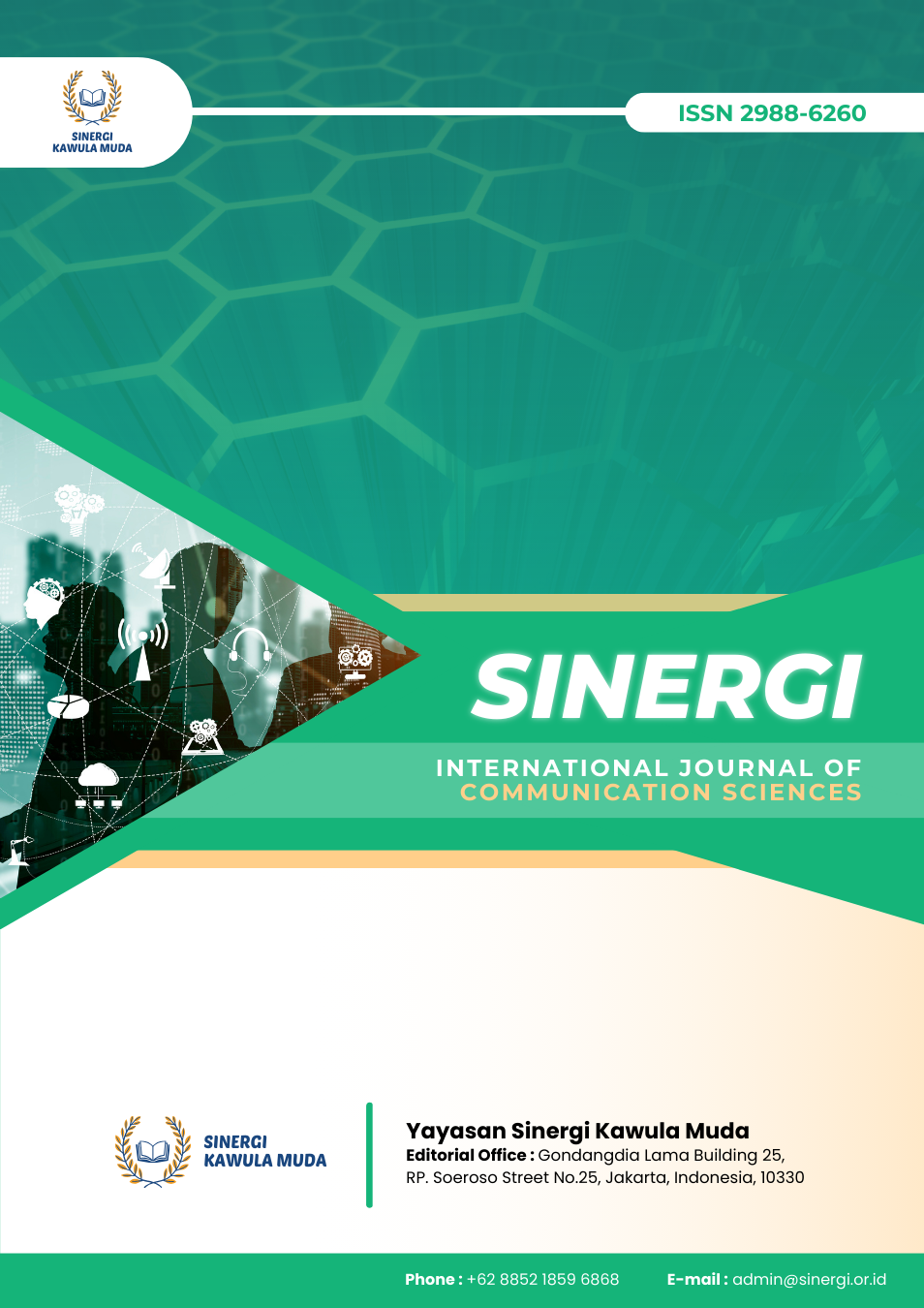The Meaning of Ujungan Tradition in Seren Taun Ceremony: A Phenomenological Study of Kasepuhan Cibadak Community
DOI:
https://doi.org/10.61194/ijcs.v2i3.498Keywords:
Phenomenology, Meaning, Ujungan Tradition, Seren Taun, Kasepuhan CommunityAbstract
The Ujungan tradition is an attraction performed by a group of people, where participants whip each other using rattan. This tradition is held once a year during the Seren Taun traditional ceremony. The purpose of this study is to explore the experiences, motives, and meanings of the Ujungan tradition for its performers within the Kasepuhan Cibadak community, Lebak Regency, Banten. This study employs a qualitative method with Alfred Schutz’s phenomenological approach. Primary data collection techniques include active participant observation and semi-structured interviews, while secondary data are obtained from document studies/documentation. The study involves four key informants who are Ujungan performers and two supporting informants, consisting of spectators and cultural experts. Data validity is ensured through source triangulation. The findings reveal that the performers experience emotional enjoyment. The "because motives" are influenced by the role of traditional leaders and the performers’ self-awareness as part of the Kasepuhan Cibadak community. Meanwhile, the "in-order-to motives" focus on preserving the Ujungan tradition as a cultural heritage. For the performers, the Ujungan tradition carries meanings of tradition, ritual, and karesmen (artistic expression). Therefore, the Ujungan tradition in the Kasepuhan Cibadak community, Lebak Regency, Banten, is regarded as entertainment with local wisdom values. The tradition also fosters values of togetherness and trust, symbolizing protection for circumcised boys, ensuring their safety from misfortune.
References
Abdulaeva, E. S., Yarychev, N. U., Abdulvahabova, B. B., Eskerkhanova, L. T., & Vakhabova, S. A. (2019). Socio-cultural Transformations in Traditional Societies in the Context of Globalization. KnE Social Sciences, 3(16), 93. https://doi.org/10.18502/kss.v3i16.4477 DOI: https://doi.org/10.18502/kss.v3i16.4477
Creswell, J. W., & Poth, C. N. (2018). Qualitative inquiry and research design: Choosing among five approaches (4th ed.). Sage Publications.
Erniwati, R., Suryadi, D., & Hamid, A. (2022). Preserving of traditional culture expression in Indonesia. Https://Www.Researchgate.Net/Publication/304336893_Preserving_of_Traditional_Culture_Expression_in_Indonesia.
Erusmiati, & Busro. (2022). Seren Taun ritual as local wisdom of agricultural society in Banten . Humanities and Social Sciences Reviews, 10(1), 225-232.
Firmansyah, E. K., Putrisari, N. D., & Rohmayani, Y. (2018). Sistem Religi Dan Kepercayaan Masyarakat Kasepuhan-Kasepuhan Banten Kidul Cisolok Sukabumi. Jurnal Pengabdian Kepada Masyarakat, 2(11), 1–12.
Guion, L. A., Diehl, D. C., & McDonald, D. (2011). Triangulation: Establishing the validity of qualitative studies. University of Florida IFAS Extension. DOI: https://doi.org/10.32473/edis-fy394-2011
Hamzah, A. (2020). Pendekatan fenomenologi Alfred Schutz dalam penelitian sosial. Jurnal Sosiologi, 5(2), 112–123.
Haryanto, J., & Setiadi, N. (2021). Digitalisasi pemasaran budaya di era 4.0. Jurnal Komunikasi Digital, 1(3), 45–57.
Hasibuan, E. J., & Muda, I. (2018). Komunikasi Antar Budaya pada Etnis Gayo dengan Etnis Jawa. JURNAL SIMBOLIKA: Research and Learning in Communication Study, 3(2), 106. https://doi.org/10.31289/simbollika.v3i2.1456 DOI: https://doi.org/10.31289/simbollika.v3i2.1456
Moustakas, C. (1994). Phenomenological research methods. SAGE Publications. DOI: https://doi.org/10.4135/9781412995658
Nicholas, J., Nelson, R., & Brown, S. (2020). Engaging youth in cultural heritage promotion: A mutual gains approach. Journal of Cultural Economics, 3(44), 567–589.
Patton, M. Q. (1999). Enhancing the Quality and Credibility of Qualitative Analysis. . . Health Services Research, 35(5), 1189–1208.
Schutz, A. (1972). The phenomenology of the social world. Northwestern University Press.
Setyaningrum, N. D. B. (2018). Budaya Lokal di Era Global. Jurnal Ekspresi Seni. Https://Journal.Isi-Padangpanjang.Ac.Id/Index.Php/Ekspresi.
Sobarudin, K. (2019). Konsep Dan Dinamika Komunikasi Antarbudaya di Indonesia. Jurnal Dakwah Dan Komunikasi, 4(1), 41. https://doi.org/10.29240/jdk.v4i1.886 DOI: https://doi.org/10.29240/jdk.v4i1.886
Sugiyono. (2015). Metode Penelitian Kombinasi (Mix Methods). Alfabeta.
Suryanti, M. , H. D., & Soewardjo, B. K. (2023). Pengembangan Gerak Uncul sebagai Dasar Penciptaan Karya Tari “Aer Sengketa". Jurnal Pendidikan Tari, 2(3), 83–95. DOI: https://doi.org/10.21009/JPT.327
Susanto, T. (2021). Governance frameworks and cultural preservation in Indonesia. Journal of Ethnographic and Cultural Studies (JECS), 8(2), 45–60.
UNESCO. (2022). Social practices, rituals and festive events. Intangible Cultural Heritage. Https://Ich.Unesco.Org/En/Social-Practices-Rituals-and-00055.
Wibisono, B., & Santoso, H. (2020). Preservation of indigenous knowledge in Indonesia: Cultural documentation and transmission . Khizanah Al-Hikmah Journal, 12(4), 235–250.
Yadi, A. (2020). Komunikasi dan Kebudayaan Islam di Indonesia. Kalijaga Journal of Communication, 2(1), 47–60. https://doi.org/10.14421/kjc.21.04.2020 DOI: https://doi.org/10.14421/kjc.21.04.2020
Downloads
Published
Issue
Section
License
Copyright (c) 2024 Nugraha Sugiarta, Risa Anggraeni, Faisal Reza

This work is licensed under a Creative Commons Attribution 4.0 International License.





